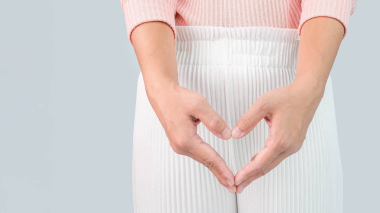Beyoncé Knowles. Serena Williams. Kim Kardashian.
In addition to their fame, there’s one thing these three women have in common: preeclampsia during pregnancy.
Word about preeclampsia has recently hit the mainstream media, as these three celebrities used their platforms to share their battles with the condition. They want to help raise awareness, and for good reason: Left untreated, preeclampsia can lead to serious – even fatal – complications for both mom and baby.
Preeclampsia, one of the most common pregnancy complications, is a condition characterized by high blood pressure and protein in your urine. According to the Centers for Disease Control and Prevention (CDC), it affects about 4 percent of pregnancies in the United States and is usually diagnosed after 20 weeks.
While there might not be any hard-and-fast ways to prevent preeclampsia, Cyrita Taylor, MD, an OB/GYN at Union OB/GYN, has some tips to help you spot the signs and keep your baby safe, even if you’re diagnosed.
“Preeclampsia is a very serious disorder that can and does lead to organ damage, stroke and seizures, as well as an increased risk of developing heart disease in the future,” warns Dr. Taylor. “Women should be mindful of the signs and symptoms and be sure to report any concerns to their care team.”
How do I know I have preeclampsia?
It’s important to catch preeclampsia early. Your provider will check for the condition at every visit by monitoring the protein levels in your urine, as well as your blood pressure. (Note: Preeclampsia can even affect women who’ve never had blood pressure issues before.)
Although not all women with preeclampsia have symptoms, there are some things you can look out for on your own that might point to the condition. “Symptoms can include a headache that’s not relieved by medication, vision changes, pain in your upper abdomen and swelling of your hands and feet,” says Dr. Taylor.
Whether you have symptoms or not, the only way to know if you have preeclampsia for sure is to go to your women’s provider for frequent checkups and tests. Keep up with your prenatal visits – they can make all the difference! Need an OB/GYN? At Atrium Health, we have a lot of options, making it easy to find the right one for you.
Is there anything I can do to prevent preeclampsia?
Preeclampsia can occur quickly, without any warning, and it can happen to anyone.
There are some factors that might put you at a greater risk. For instance, in a post from tennis legend Serena Williams, she shared a CDC fact stating that pregnancy-related deaths are 3 to 4 times higher for black women than for white women – and the risk of developing preeclampsia, as she did, is higher as well.
Some research also suggests that age plays a role, with pregnant women over the age of 40 at a higher risk of preeclampsia. And if someone in your family has had it? That might just increase your chances, too.
Things like race, age and genetics can be risk factors, and so can diabetes, high blood pressure, obesity and if you’ve had preeclampsia before. Even your stress levels might put you at a higher risk. “Studies have also shown that mental stress – including work stress, anxiety and depression – may be a risk factor for preeclampsia,” says Dr. Taylor. That’s just another reason to take care of your mental health and keep the stress to a minimum during your pregnancy.
Risk factors aside, little is known about why preeclampsia affects some and not others. So what can you do to prevent it? Unfortunately, not much. But your best bet is to keep your pregnancy as healthy as possible by following a nutritious diet and getting plenty of exercise.
Because it’s so important to catch preeclampsia early, you can also consider tracking your blood pressure at home and staying aware of how you’re feeling. There might not be a great way to prevent it from happening, but the earlier preeclampsia is detected, the better things will be for you and your baby.
I already have preeclampsia. What can I do about it?
Almost always, the best treatment for preeclampsia is to deliver the baby, whether through induced labor, C-section or a natural delivery. “In most cases, preeclampsia resolves with delivery,” says Dr. Taylor. She adds that, if the preeclampsia is severe, moms are given medications to treat their blood pressure, as well as to reduce their risk for seizures during labor and delivery and after the baby is born.
But if your baby isn’t due any time soon, delivery might not be an option. Your provider will help you decide another way to manage your condition, often through medications, bedrest and, if necessary, hospitalization.
While not all moms with preeclampsia will be hospitalized, you’ll need to see your provider more than you did before. This helps them keep a close eye on your blood pressure and how your baby is growing; one of the biggest complications of preeclampsia is that your baby will be delivered too early, before they’re fully developed.
“If your preeclampsia isn’t severe, your provider will watch you closely and most likely deliver at around 37 weeks,” says Dr. Taylor. “If your preeclampsia is more severe, your delivery will be closer to 34 weeks.”
Preeclampsia is serious – and knowing the signs is critical – but don’t let the chance of getting it, or even getting an official diagnosis, scare you. Many women who develop preeclampsia go on to have normal deliveries and healthy babies – if anything, it might just mean more OB/GYN visits to keep a closer eye on you and your little one.
Always remember that your care team has your family’s best interest in mind, and you can count on them to help you decide what’s right for you and your baby.



